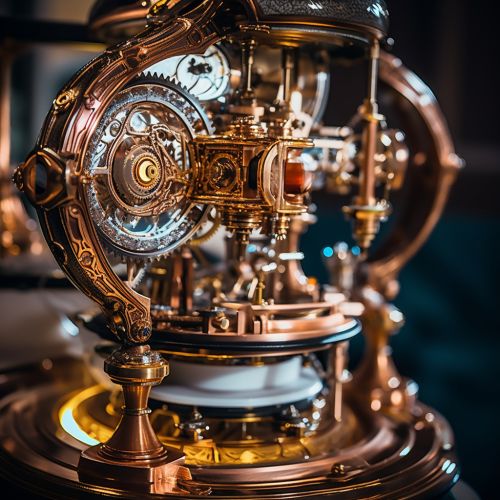Optomechanical Driving
Introduction
Optomechanical driving is a field of study within physics that explores the interaction between light and mechanical motion. This interaction is facilitated by optomechanical systems, which are designed to convert optical energy into mechanical energy, and vice versa.


Optomechanical Systems
Optomechanical systems are devices that can convert optical energy into mechanical energy, and vice versa. These systems are typically composed of a mechanical resonator and an optical resonator. The mechanical resonator is designed to vibrate at a specific frequency, and the optical resonator is designed to trap and store light. When light enters the optical resonator, it can cause the mechanical resonator to vibrate, thus converting the optical energy into mechanical energy. Conversely, the vibration of the mechanical resonator can affect the properties of the light stored in the optical resonator, thus converting the mechanical energy back into optical energy.
Principles of Optomechanical Driving
The principles of optomechanical driving are rooted in the photon pressure effect. When light is absorbed or reflected by a surface, it exerts a force on that surface. This force is known as the radiation pressure. In an optomechanical system, the radiation pressure exerted by the light stored in the optical resonator can cause the mechanical resonator to vibrate. This vibration can then be used to perform mechanical work, thus converting the optical energy into mechanical energy.
The conversion of mechanical energy back into optical energy is facilitated by the Doppler effect. When the mechanical resonator vibrates, it causes the optical resonator to move. This movement can cause the frequency of the light stored in the optical resonator to shift, thus converting the mechanical energy back into optical energy.
Applications of Optomechanical Driving
Optomechanical driving has a wide range of applications in various fields, including quantum information processing, precision measurement, and telecommunications.
In quantum information processing, optomechanical systems can be used to create quantum entanglement between light and mechanical motion. This entanglement can then be used to perform quantum computations or to transmit quantum information.
In precision measurement, optomechanical systems can be used to measure small forces or displacements. The sensitivity of these measurements is limited by the quantum limit, which is determined by the Heisenberg uncertainty principle.
In telecommunications, optomechanical systems can be used to convert optical signals into mechanical signals, and vice versa. This conversion can be used to modulate or demodulate optical signals, or to transmit mechanical signals over long distances.
Challenges and Future Directions
Despite the potential of optomechanical driving, there are several challenges that need to be addressed. One of the main challenges is the thermal noise, which can limit the sensitivity of optomechanical systems. Another challenge is the quantum decoherence, which can limit the performance of optomechanical systems in quantum information processing.
Future directions in the field of optomechanical driving include the development of new materials and designs for optomechanical systems, the exploration of new applications in quantum information processing and precision measurement, and the investigation of new phenomena in optomechanics, such as quantum squeezing and optomechanical cooling.
